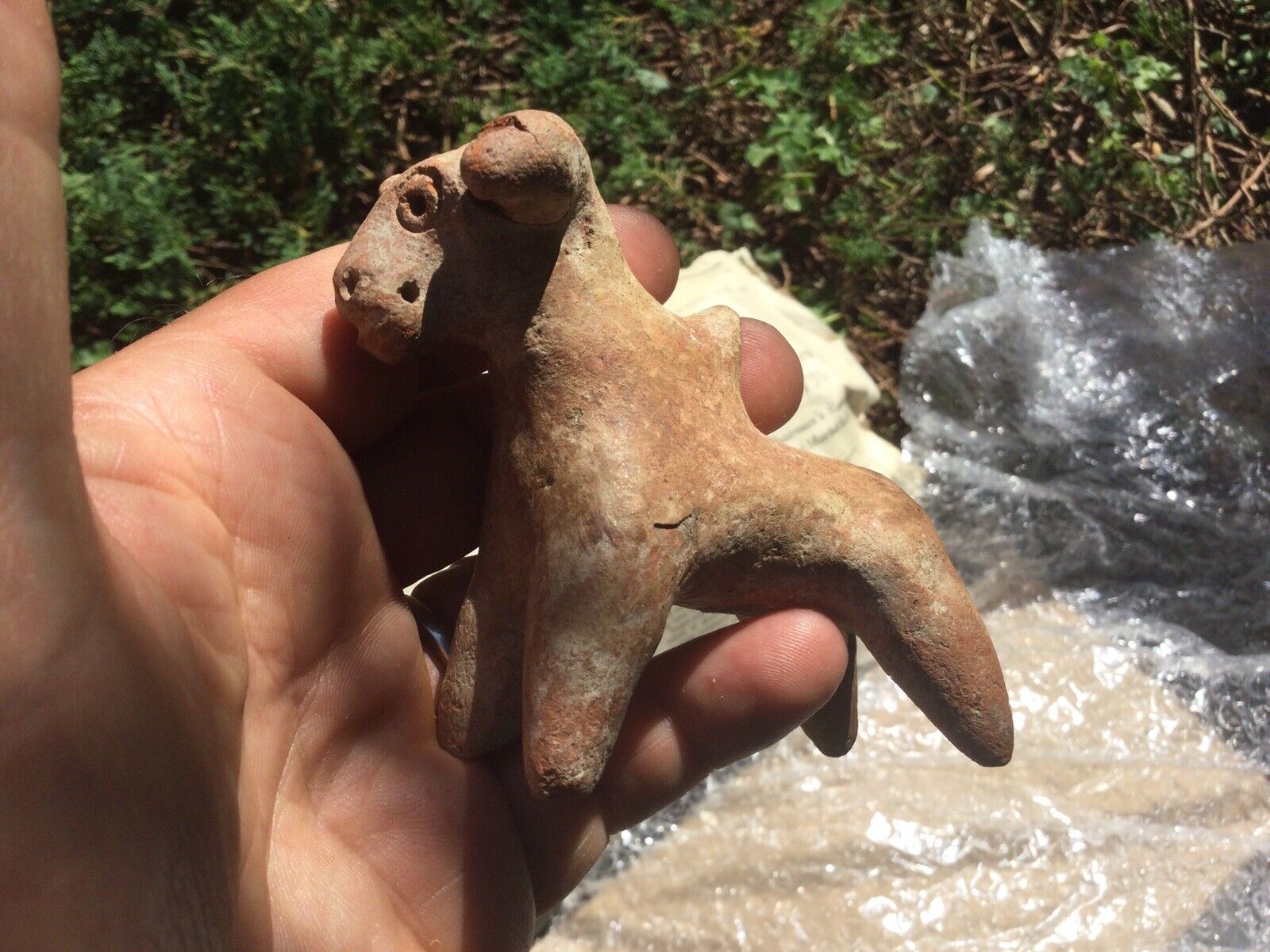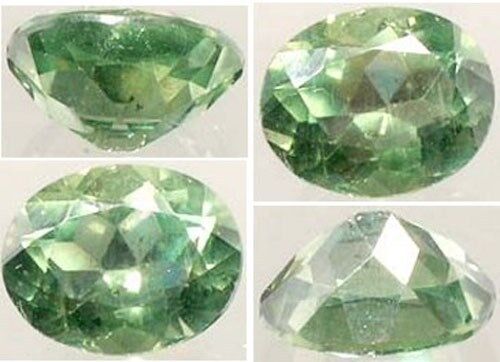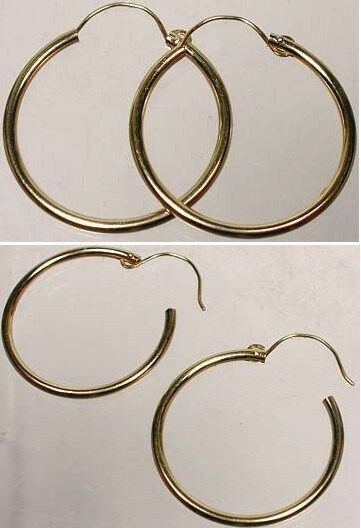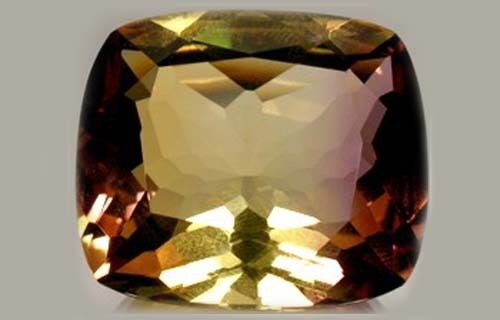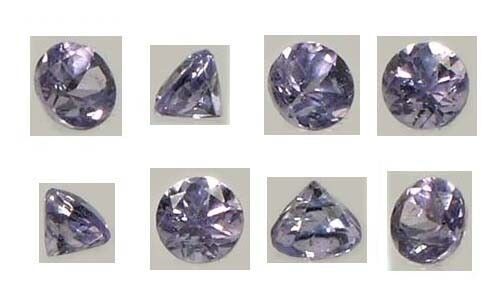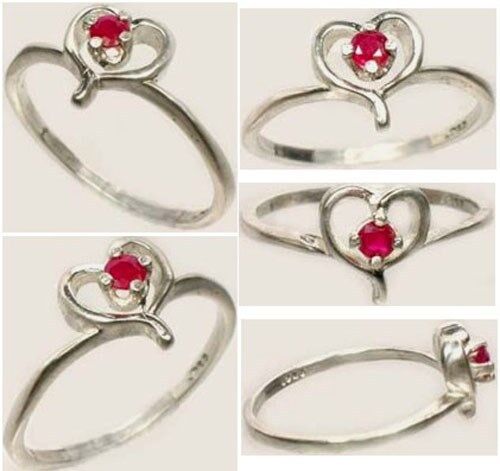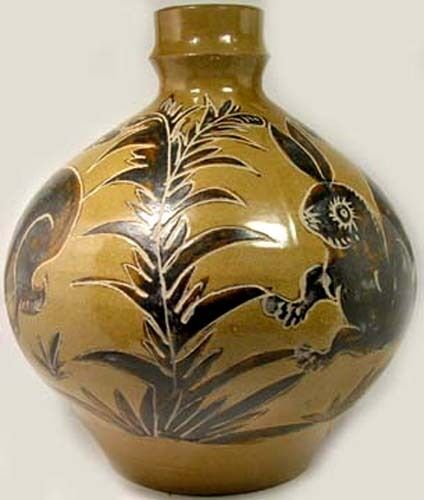-40%
19thC Antique Russian Handcrafted ¾ct+ “Pink Emerald” Beryl Morganite Elba Italy
$ 73.91
- Description
- Size Guide
Description
Antique Nineteenth Century Handcrafted Genuine Natural Three-Quarter Carat (Plus) Faceted Pastel Pink Emerald (“Morganite”).CLASSIFICATION:
Faceted Pink Beryl (Morganite).
ORIGIN:
Elba Island, Italy. 19th Century. Cut in 19th Century Yekaterinburg, Russia.
SIZE
: 6mm Square. 4mm Thick. All measurements approximate.
WEIGHT
: 0.81 carats.
NOTES
: Upon request we can set your gemstones as a ring, pendant, or as earrings (click
here
for more information).
DETAIL:
Named “morganite” after the famous American financier J.P. Morgan, pink beryl is known in Russia as pink emerald. Though Americans claim to have first “discovered” pink beryl early in the twentieth century (in California), it had actually been produced since the 1880’s from deposits on Elba Island, offshore Italy; and had also been produced from deposits in Siberia since early in the nineteenth century. Pink Beryl was likely available in the ancient world as well, but probably mistaken for tourmaline or rose quartz. Tourmaline itself was the subject of much confusion. Despite the fact that tourmaline was correctly identified and described in the ancient world by Theophrastus of Ancient Greece (student and successor of Plato and Aristotle) in 314 B.C. , by the Middle Ages and even through Renaissance Europe, pink tourmaline was misidentified as ruby, and green tourmaline misidentified as emerald. Like tourmaline, it’s possible that pink beryl was used in ancient mystic ceremonies in as a tool to make known who or what was the cause of troubles or evil deeds.
Despite the fact that “pink emeralds” are produced in Siberia, this particular piece comes from Elba Island, Italy. Imported from Italy, the gemstone was hand crafted and faceted by a 19th century Russian artisan, part of an heritage renown for the production of the elaborate gemstones and jewelry of the Czars of Medieval, Renaissance, and Victorian Russia. The result is an exquisite and incredibly delicately colored precious gemstone with lots of depth and gorgeous tone. It is a very lightly hued, pastel pink gemstone, with lots of sparkle and luster. Morganite is noted for being a rather “dirty” gemstone, like emerald possessing lots of internal blemishes. However this specimen is no worse than eye clean, and even in the accompanying photo enlargements it is difficult to discern any significant blemishes. To the naked eye it is without flaw, delicately hued, and alive with sparkles. Good quality pink beryl/morganite/pink emerald is in short supply and can be very costly. It is a quite uncommon and fairly scarce gemstone.
As might be expected under magnification the gemstone shows the unmistakable, hallmark characteristics of having been hand crafted. The coarseness of the antique, handcrafted finish is considered desirable to most gemstone aficionados, and is not considered a detriment, or detract from the value of a gemstone. These characteristics are not only expected of hand-finished gemstones, many believe that such antique hand-crafted gemstones possess much greater character and appeal than today's mass-produced, laser-cut gemstones. Unlike today’s computer controlled machine produced gemstones that approach flawlessness in a perfect finish, the cut and finish of an antique, handcrafted gemstone such as this is the legacy of an artisan who lived two centuries ago.
Handcrafted though it may be the gemstone possesses superb luster and sparkle, and to the eye is completely transparent. However that is not to intimate that it is unconditionally flawless. True, the blemishes it possesses are not visible to the naked eye, and the gemstone can be characterized, to use trade jargon, as "eye clean". To the eye it is indeed flawless; however magnified as it is here in these photo enlargements you might be able to just barely pick out one or two minute blemishes within the gemstone, barely perceptible even at such high magnification. Of course much the same may said about almost any natural gemstone. An absolutely flawless gemstone simply is not the rule in nature. Most absolutely flawless gemstones will upon close examination be revealed to be synthetic.
You might also notice under magnification occasional irregularities in the cut and finish. Naturally these characteristics are not only expected of hand-finished gemstones, you must also consider that two centuries ago the mining techniques prevalent did not allow the ultra deep mining operations which are so common today. Keep in mind that two centuries ago mankind was more or less limited to surface deposits or near surface deposits of gemstones. Higher quality gemstones which today are routinely mined from beneath hundreds of meters, even kilometers beneath the earth's surface, were simply inaccessible then.
It is precisely for these reasons antique gemstones must be appreciated as antiques first, gemstones second. The relatively superlative quality of contemporary gemstones routinely mined from deep beneath the earth's surface today were simply not accessible two centuries ago, or at least, only rarely so. However for most, the unique nature and character of these antique gemstones more than makes up for the blemishes found within the gemstones, as well as the cutting irregularities common to handcrafted gemstones, all of which are by and large (if at all) are only visible under magnification.
HISTORY OF MORGANITE:
Most everyone is familiar with emeralds and aquamarine. But did you know both are varieties of the gemstone beryl? Dark green beryl is known as emerald, and tends to be infested with inclusions. Light blue-green beryl on the other hand, aquamarine, tends to be transparent, lightly colored, and more frequently found eye clean to flawless. What light blue-green is to aquamarine, light green is to “green beryl”. Green beryl is aquamarine, except that whereas aquamarine light blue-green color comes from iron impurities, the light green of beryl comes from vanadium. Like aquamarine, green beryl is generally found in better qualities than emerald, which is generally heavily included and fractured. But did you ever hear of pink beryl?
Pink beryl is known in Russia as pink emerald – which is an apt description as emerald is beryl – as the only difference between them is that pink beryl is colored by manganese impurities; whereas other varieties of beryl are colored blue to green by impurities of iron (aquamarine), chromium (emerald), and vanadium (green beryl). For those few Americans who have never heard of pink beryl, they might know it better as “Morganite”, so named for the gemstone collector and capitalist J. P. Morgan. Just when exactly pink beryl (or if you prefer, “pink emerald” or “Morganite”) was first discovered is a source of contention. An American gemologist by the name of George Kunz is officially credited with the first “discovery” of pink beryl in California, and subsequently named it “Morganite” in 1911 for the financier and gemstone collector extraordinaire J.P. Morgan.
Pink beryl was also discovered “for the first time” (probably about the fifth time, actually) in Madagascar in 1908. Even the Natural History Museum of Los Angeles is confused, claiming that pink beryl was “first” discovered in the early 1900’s nearby (in California)…while at the same time displaying a large pink beryl which was donated to the museum in 1888. In Europe, pink beryl has been produced from Elba Island, Italy, since the 1880’s. Pink beryl was also produced from deposits in Siberia since the 1800’s as well, though it is not certain when it is first claimed to have been discovered or produced.
Throughout the history of the ancient world, gemstones were believed capable of curing illness, possessing valuable metaphysical properties, and providing protection. Found in Egypt dated 1500 B. C., the "Papyrus Ebers" offered one of most complete therapeutic manuscripts containing prescriptions using gemstones and minerals. Gemstones were not only valued for their medicinal and protective properties, but also for educational and spiritual enhancement. There are no records of pink beryl in the ancient world, though of course it is almost certain that it must have been found in limited quantities. However it would likely have been confused with tourmaline or rose quartz.
In any event there are no ancient beliefs pertaining to the medicinal or metaphysical uses of the stone. But in the past century practitioners have postulated that pink beryl, like its cousin aquamarine, provides relief from stress, helping wearers to maintain a positive attitude during times of crisis. It is also believed to enhance attributes such as patience, diligence, and communication skills. It is also believed to strengthen the bond between lovers and spouses. Like aquamarine, morganite is also believed to assist the cure of respiratory system ailments. Modern astrologers promote wearing morganite as an antidote to the chaos of modern life, suggesting that it provides peace at mind, body and soul and enhances the clarity of thoughts.
BERYL HISTORY:
There are many members to the beryl family, including emerald (green beryl), aquamarine (blue-green beryl), heliodore (yellow beryl), morganite (pink beryl), red beryl (bixbite), and goshenite (colorless beryl). There’s also a very rare red-pink variety of Beryl found in Russia’s Ural Mountains known as “vorobyevite”, and there are several other very uncommon beryls. Two of those varieties are darker blue colored and known as “true blue” beryl (from Canada) and Maxixe beryl (from Brazil). Yet another uncommon variety is known as riesling beryl (from Germany), best described as pale green colored with a warm, golden yellow flash.
Most forms of beryl have to varying degrees been known throughout the history of mankind, but generally been identified as separate gemstones (such as emerald and aquamarine for example), and thus have unique histories. When the term “beryl” is used to describe a specific gemstone (and not a family of gemstones), it is generally meant to denote a gemstone quality beryl which is not one of the afore-mentioned named species (e.g., aquamarine, emerald, etc.), and usually in reference to green beryl, although sometimes the term “precious beryl” is used, and it is not uncommon to find some jewelers who use the simple term “beryl” to refer to heliodore (also known as “golden beryl”).
Beryl's name is derived from the Greek word “beryllus” (and the Persian “belur”), the term originally used in the ancient world to describe any green stone, and only later assigned to the beryl family as we know it today. The name “beryllus” in turn was derived from the Sanskrit word veruliyam. The name “heliodore” is Greek for “gift of the sun”. Beryl was actually used as far back as the Upper Paleolithic (Late Stone Age) period (about 40,000 to 100,000 years ago) to produce cutting tools. Ancient legends state that beryl was used to ward off demons and evil spirits, to protect against psychic manipulation or “spells” cast by magicians or shamans, and that it was used as a ceremonial stone in the rites of magic, as well as (when worn as an amulet or in a ring) to protect travelers and pilgrims from danger during their journeys.
Pliny the Elder, first century Roman Historian and Naturalist, recorded that powdered beryl was used by the ancient Romans to cure eye injuries and to treat disorders of the heart and spine. Beryl was also described by the fourth century B.C. Greek naturalist, physicist, and philosopher “Theophrastus” (who was a student of Plato and Socrates). An elixir of water in which beryl was dipped was used by the ancient Greeks to cure bladder infections and kidney stones. A medieval cure for asthma also involved the use of beryl, and the physicians of the Middle Ages regarded beryl as a remedy for liver disease and jaundice. The Bible even mentions beryl in the Song of Solomon, where it is said, "O daughters of Jerusalem, this is my beloved and this is my friend; his hands are as gold rings set with the beryl."
Other ancient legends pertaining to beryl indicate that beryl was used in the ancient world to promote cheerfulness and marital love, to retard laziness, and maintain youthfulness. Heliodore in particular was also believed to make one sympathetic and increase sincerity. Goshenite (colorless beryl) is believed to have been the first material used in the ancient world to produce eye spectacles (and accounts for the German name for glasses, “brille”). For well over a thousand years in the ancient and medieval world colorless beryl was used as a “crystal ball”, or “scrying stone”. Beryl was renowned for its (perceived) ability to induce magical visions in the minds of receptive people. One technique used by seers was to place a beryl gemstone in a bowl of water. When sunlight was reflected from the water, the reflections were believed to produce visions.
Beryl spheres were particularly popular with seers during the Middle Ages, particularly in early medieval Ireland. The mystical powers of beryl and its transparency made it a medium for seeing and predicting the future throughout much of mankind’s recorded history. Ancient populations also believed that a beryl engraved with a frog glyptograph magically possessed the power to turn opponents into friends, and when carved with a bird (according to a book published in 1685), the spirit of a deceased person could be invoked. Beryl was also used by ancient populations to bring rain during conditions of drought.
Beryl is found worldwide, most notably in Argentina, Afghanistan, Russia (both in Siberia and the Urals), the Ukraine, Kazakhstan, South Africa, Madagascar, Zimbabwe, Ethiopia, Mozambique, Namibia, India, the United States, Norway, Sweden, Austria, Germany, Greenland, and Brazil. The largest faceted golden beryl, 2,054 carats, is on display at the Smithsonian Institution in Washington D.C. Australia and Russia both produce very high-quality light green beryl, not to be confused with emerald, although in Australia the light green beryl produced there is in fact often referred to as “Australian Emerald” (though it is not actually emerald).
Throughout the history of the ancient world, gemstones were believed capable of curing illness, possessed of valuable metaphysical properties, and to provide protection. Found in Egypt dated 1500 B. C., the "Papyrus Ebers" offered one of most complete therapeutic manuscripts containing prescriptions using gemstones and minerals. Gemstones were not only valued for their medicinal and protective properties, but also for educational and spiritual enhancement. In the ancient world it was believed that beryl could bring the wearer eternal youthfulness, and it was also used as a remedy for nausea, obesity, ulcers and seasickness. It was also believed to strengthen the wearer’s memory, and to stimulate innovative ideas. In the ancient East beryl was conduct life-giving energy into the body, and was also known as the “composure” stone, believed to help wearers maintain good spirits.
Present-day practitioners of alternative medicine believe that beryl helps strengthen the circulatory and pulmonary systems, making them more resistant to toxins and pollutants, and that beryl is also helpful to the eyes, throat, for curing gynecological disorders, and useful in easing a stressed mental state, and can even be used as a sedative. It is also believed to enhance the function of the kidney and liver. Present-day mystics believe, as did the magi of the ancient world, that beryl remains the best stone available for crystal gazing. A mirror of polished beryl is said to be able to reveal other people's secrets, no matter how well hidden or private they are. Beryl is also believed by present-day practitioners to make the idle industrious, to increase the wearer’s energy levels, determination and motivation, particularly when the wearer is required to tackle boring, repetitive, or time-consuming work. The stone is also reputed to quicken the wit and sharpen intellectual skills. It is believed that wearing beryl while reading or studying will ensure that the information is understood and remembered.
Domestic shipping (insured first class mail) is included in the price shown. Domestic shipping also
includes
USPS Delivery Confirmation (you might be able to update the status of your shipment on-line at the
USPS Web Site
). Canadian shipments are an extra .99 for Insured Air Mail; International shipments are an extra .99 for Air Mail (and generally are NOT tracked; trackable shipments are EXTRA).
ADDITIONAL PURCHASES
do receive a
VERY LARGE
discount, typically about per item so as to reward you for the economies of combined shipping/insurance costs. Your purchase will ordinarily be shipped within 48 hours of payment. We package as well as anyone in the business, with lots of protective padding and containers.
We do NOT recommend uninsured shipments, and expressly disclaim any responsibility for the loss of an uninsured shipment. Unfortunately the contents of parcels are easily “lost” or misdelivered by postal employees – even in the USA. If you intend to pay via PayPal, please be aware that PayPal Protection Policies REQUIRE insured, trackable shipments, which is INCLUDED in our price. International tracking is at additional cost. We do offer U.S. Postal Service Priority Mail, Registered Mail, and Express Mail for both international and domestic shipments, as well United Parcel Service (UPS) and Federal Express (Fed-Ex). Please ask for a rate quotation. We will accept whatever payment method you are most comfortable with. If upon receipt of the item you are disappointed for any reason whatever, I offer a no questions asked return policy. Send it back, I will give you a complete refund of the purchase price (less our original shipping costs).
We travel to Russia each year seeking antique gemstones and jewelry from one of the globe’s most prolific gemstone producing and cutting centers, the area between Chelyabinsk and Yekaterinburg, Russia. From all corners of Siberia, as well as from India, Ceylon, Burma and Siam, gemstones have for centuries gone to Yekaterinburg where they have been cut and incorporated into the fabulous jewelry for which the Czars and the royal families of Europe were famous for. My wife grew up and received a university education in the Southern Urals of Russia, just a few hours away from the mountains of Siberia, where alexandrite, diamond, emerald, sapphire, chrysoberyl, topaz, demantoid garnet, and many other rare and precious gemstones are produced. Though perhaps difficult to find in the USA, antique gemstones are commonly unmounted from old, broken settings – the gold reused – the gemstones recut and reset.
Before these gorgeous antique gemstones are recut, we try to acquire the best of them in their original, antique, hand-finished state – most of them centuries old. We believe that the work created by these long-gone master artisans is worth protecting and preserving rather than destroying this heritage of antique gemstones by recutting the original work out of existence. That by preserving their work, in a sense, we are preserving their lives and the legacy they left for modern times. Far better to appreciate their craft than to destroy it with modern cutting. Not everyone agrees – fully 95% or more of the antique gemstones which come into these marketplaces are recut, and the heritage of the past lost. But if you agree with us that the past is worth protecting, and that past lives and the produce of those lives still matters today, consider buying an antique, hand cut, natural gemstone rather than one of the mass-produced machine cut (often synthetic or “lab produced”) gemstones which dominate the market today.
Our interest in the fabulous history of Russian gemstones and the fabulous jewelry of the Czar’s led to further education and contacts in India, Ceylon, and Siam, other ancient centers of gemstone production and finishing. We have a number of “helpers” (family members, friends, and colleagues) in Russia and in India who act as eyes and ears for us year-round, and in reciprocity we donate a portion of our revenues to support educational institutions in Russia and India. Occasionally while in Russia, India, Siam, and Ceylon we will also find such good buys on unique contemporary gemstones and jewelry that we will purchase a few pieces to offer to our customers here in America. These are always offered clearly labeled as contemporary, and not antiques – just to avoid confusion. We can set most any antique gemstone you purchase from us in your choice of styles and metals ranging from rings to pendants to earrings and bracelets; in sterling silver, 14kt solid gold, and 14kt gold fill. When you purchase from us, you can count on quick shipping and careful, secure packaging. We would be happy to provide you with a certificate/guarantee of authenticity for any item you purchase from me. There is a fee for mailing under separate cover. Please see our
"ADDITIONAL TERMS OF SALE."
TRANSLATE
Arabic
Chinese
French
German
Greek
Indonesian
Italian
Hindi
Japanese
Korean
Swedish
Portuguese
Russian
Spanish

